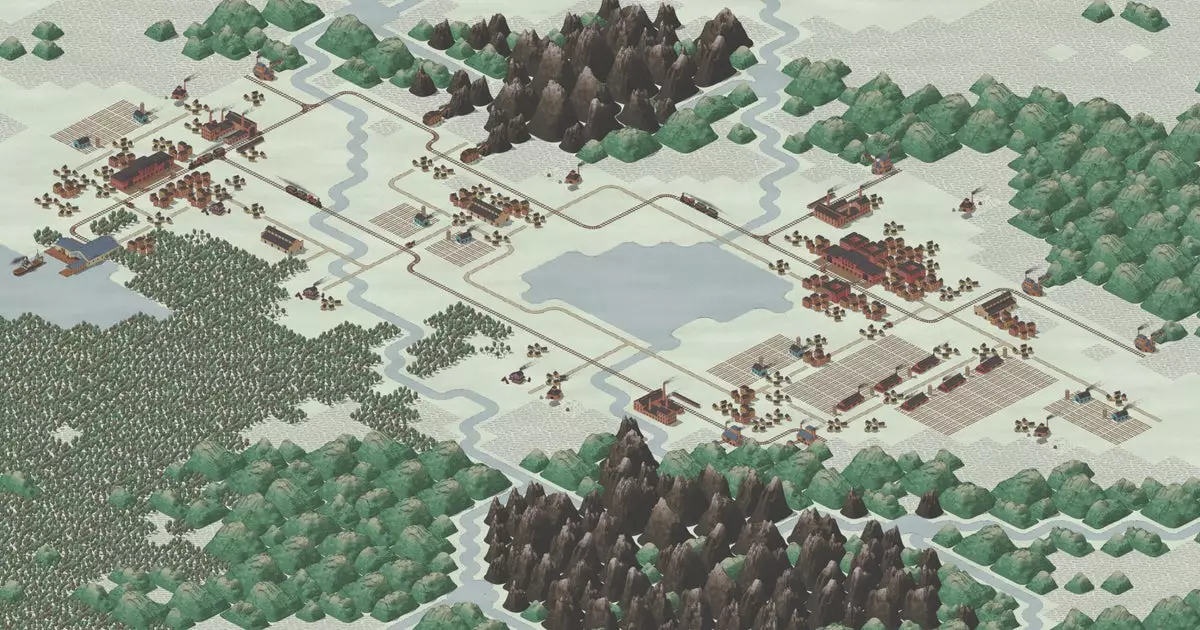Times Of Progress emerges as a captivating entry in the genre of city-building games, a genre that often blends creativity with logistical planning. Hailing as my first earnest foray into writing about this intriguing title, I cannot help but feel daunted by the legacy of insightful recommendations from Sin Vega, the esteemed Prime Minister of Strategy Gaming. Sin’s colorful analogy of writing news articles as a dynamic form of practice under the watchful eye of a master indeed encapsulates the pressure that comes with portraying such complex gameplay narratives. Resurrecting echoes of historical figures, this game’s setting during the Industrial Revolution acts as a vibrant canvas where both ambition and anxiety vie for supremacy, mirroring the very essence of urban development during that transformative period.
For many, the thought of constructing a thriving metropolis might conjure images of bustling streets, economic triumphs, and the diligent rhythm of labor. Yet, within Times Of Progress, this imaginative ambition is tempered by the historical implications of its setting. This elegant yet challenging backdrop frames players’ endeavors as they weave through the intricacies of managing urban growth, technology, and labor relations. The pressure to cultivate a flourishing environment while navigating the pitfalls of city management makes each decision feel both significant and precarious.
At first glance, the visual presentation of Times Of Progress captivates players with its appealing aesthetics, which harmoniously blend minimalism with detail. The game graces players with a procedurally generated isometric view characterized by neatly organized diamond-shaped layouts, interconnected by roads and rail systems. This distinct art style enhances the urban landscape, employing a soothing color palette of pale earth tones, brick reds, and vibrant greens. More than just eye candy, the visuals are interspersed with animated features, such as gently wafting smoke from industrial chimneys and houses evolving into more intricate forms—a delightful representation of urban progression that breathes life into the city-scape.
Furthermore, this game forgoes the densely packed visuals often found in other city-builders, preferring a somewhat airier atmosphere. This less cluttered approach not only aids in navigation but also invites players to absorb the intricacies of their burgeoning cities, encouraging an appreciation for the various systems at play.
In terms of gameplay mechanics, Times Of Progress offers a nuanced historical framework stitched seamlessly into its core features. Technology plays a substantial role; it doesn’t simply serve as an arbitrary mechanic but closely relates to historical advancements during the Industrial Revolution. As players progress, they unlock technologies like the typewriter or water frame according to a meticulously crafted timeline that also concurrently unfolds across AI-managed cities. This immersive format not only accentuates the era’s innovation but also allows players to feel a sense of connection to a broader historical narrative.
Trade takes center stage in this strategic experience—absent are conventional military elements, fostering a more economically inclined gameplay style. Engaging in mercantile exchanges with neighboring cities proves critical, making the dynamics of commerce and resource management integral to maintaining a successful metropolis. Yet, the game doesn’t shy away from social challenges, particularly in terms of labor politics. As workers grapple with the demands of their livelihoods, players must tread carefully between economic ambitions and the potential for unrest, underlining the tension between productivity and workers’ rights.
Ultimately, Times Of Progress invites players to embrace the complex interplay of design and historical fidelity. With its focus on building an economically sound and socially just city, the title strikes a balanced chord that resonates with both history buffs and city-building enthusiasts alike. The weight of every decision—whether it involves technological advancement or labor management—invites players to cultivate thoughtful strategies that reflect not just their vision but also the lessons of the past.
As I conclude my exploration of this title, I imagine the potential for deeper insights and narratives awaiting those who journey through Times Of Progress. This game stands as a testament to the vibrant intersection of history and gameplay, making it well worth a visit for anyone eager to navigate the compelling challenges of urban development during the Industrial Revolution.

